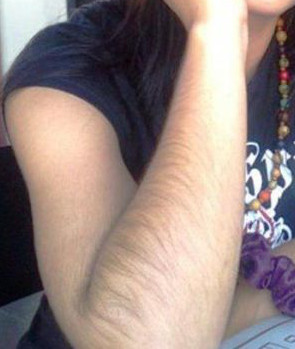Indian Women and Hyperpigmentation
I encounter many women of Indian or South Asian who’ve had disastrous results after laser hair reduction treatments. Not only is the unwanted hair still there but it’s increased in density and perhaps even sprouted in areas where there was no hair before. Although I am not of South Asian descent I have also experienced laser induced hair growth so this phenomenon is not limited to brown-skinned women but it is certainly more prevalent in women of colour.
One of the reasons Indian women (or any woman with South Asian heritage) are so susceptible to excess hair growth following laser treatments is because of the relationship between skin colour and hair density that is crucial to success in laser hair treatments.
The ideal candidate for laser hair reduction has light skin and dark, coarse hair. The contrast between skin and hair is necessary so the light energy of the laser is not intercepted (absorbed) by the skin rather than the hair.
This presents a very specific problem for women with dark hair and dark skin. I suspect that much of the energy is lost to the skin when lasers are used to treat dark-skinned individuals. Balancing the needs of the skin with the needs of the hair is tricky because too much energy is bad for the skin, but too little energy is where the treatment failure or worse, induced growth, become a risk.
If I had my way, or if I had millions of dollars to run an ad campaign that would get international attention, nobody with tan/brown/black skin would go anywhere near a laser for hair treatments. It works in very specific circumstances for people with light skin and coarse, dark hair. Only.

Downy fuzz common on Indian or South Asian women, this type of hair will not respond well to laser treatments.
I think Indian women are particularly susceptible to increased growth following laser simply because it’s not uncommon to see a downy black fuzz growing on the sides of the face, or on the tummy, arms and legs. It’s the downy fuzz that causes all the problems.
Laser cannot deal with soft dark hair on dark skin. It is the ideal situation for stimulating hair growth because it’s always a precarious balancing act to preserve the skin, while attacking the pesky hair. Although a longer wavelength of light is used to treat dark skin, the hair still can’t absorb the light when the hair shaft is too fine so the energy ends up in the skin anyway.
Since hyperpigmentation is a significant risk for women of colour it is advised that laser treatments be delivered at a lower setting so the skin isn’t injured enough to produce a strong surface reaction (like hyperpigmentation). Once again this strategy presents an ideal situation for laser-induced hair stimulation. Lowering the settings to preserve the skin does not allow enough energy to target the hair follicle and will produce the opposite effect – growth is induced, rather than reduced.
Further Reading:
Post Inflammatory Hyperpigmentation After Electrolysis Hair Removal
https://www.follikill.com/2013/11/19/post-inflammatory-hyperpigmentation-following-electrolysis-or-laser/

One thought on “Indian Women More Susceptible To Paradoxical Laser Induced Hair Growth”
Comments are closed.